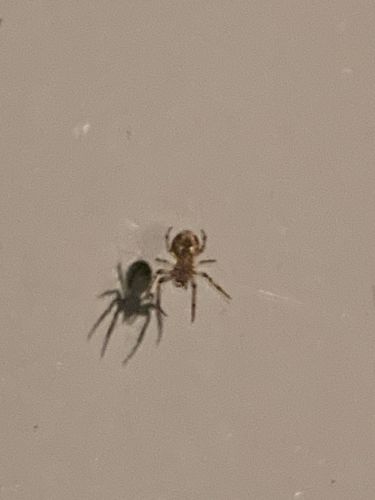Ant Mimic Spider and a Small Orb Weaver/Linyphiid Spider
Scientific Name: Various species (e.g., Castianeira spp. for Ant Mimic, various Araneidae or Linyphiidae for the other)
Order & Family: Araneae (Spiders), diverse families (e.g., Corinnidae for Ant Mimic, Araneidae or Linyphiidae for the other)
Size: Typically 2-10 mm for both types of spiders shown.

Natural Habitat
Ant mimic spiders are often found in habitats with ant populations, including fields, forests, and sometimes indoors. The other spider, depending on its specific family (Orb Weaver or Sheetweb/Money Spider), could be found in webs in gardens, forests, or near the ground/vegetation.
Diet & Feeding
Both are predatory, feeding on small insects and other invertebrates. Ant mimic spiders might specifically target ants or other arthropods, while orb weavers and linyphiid spiders capture prey in their webs.
Behavior Patterns
The darker spider, likely an Ant Mimic, imitates ants in appearance and sometimes behavior to avoid predators or to facilitate hunting. The lighter spider is likely a web-building spider; orb weavers construct elaborate circular webs, while linyphiid spiders build sheet-like or hammock-like webs. The image appears to show them both on a flat surface, perhaps in an incidental encounter or having fallen from a web.
Risks & Benefits
Spiders are generally beneficial, controlling insect populations. Most are not aggressive and their venom is not medically significant to humans, though a bite can cause localized irritation. Ant mimic spiders are harmless. Orb weavers and linyphiids also pose no significant risk to humans beyond a rare, minor bite. They contribute to ecosystem health by predating on pest insects.
Identified on: 9/23/2025